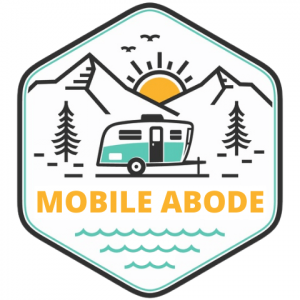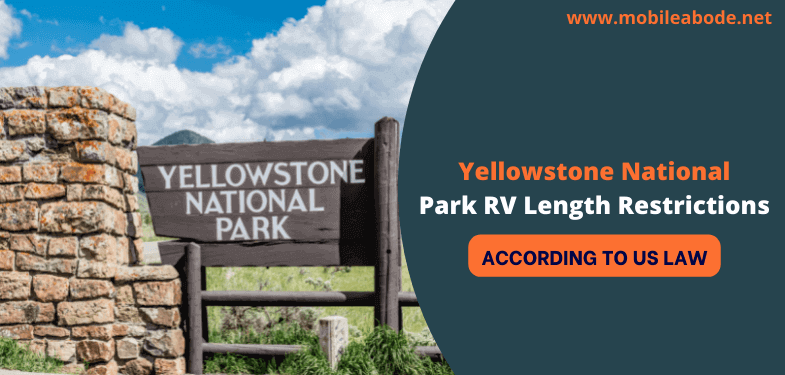One of the most beautiful and well-known National Parks in the United States is Yellowstone. Unfortunately, if you’re planning to bring your RV to this park, you may be in for a surprise. There are length restrictions in place that could prevent you from entering the park altogether.
So in this blog post, we will provide some tips on what to do if your RV is too long to enter Yellowstone National Park. Keep reading to find out more about these restrictions and what alternatives are available to you.
RV Length Restrictions in US 2023
The vast majority of roads in Yellowstone National Park are open to vehicles measuring up to 40 feet in length. However, have length restrictions of 30 feet or less.
The most notable of these is the road to Dunraven Pass, which has a maximum length restriction of 25 feet. Other roads with shorter length restrictions include the road to Sylvan Pass (30 feet) and sections of the North Rim Drive (30 feet) and South Rim Drive (25 feet). When planning your visit, be sure to check the park’s website for up-to-date road information.
What are the RV length restrictions for Yellowstone National Park?
The maximum RV length for Yellowstone National Park is 40 feet. Any vehicles longer than that will not be permitted into the park. There are also a limited number of full hookup sites available, so it’s recommended that you make reservations in advance if you’re planning to stay in an RV.
Be aware that due to the high elevation, RVs may have difficulty operating in the park during the summer months. For more information, please see the official Yellowstone National Park website.
How can you find out about the restrictions before your trip to the park?
You can find out about the restrictions before your trip to the park by visiting the park’s website or contacting the park directly. The website will typically have a section devoted to rules and regulations and the park staff can provide you with specific information about any restrictions that may be in place.
It’s always a good idea to be aware of the restrictions before you visit any type of park or recreation area so that you can plan your trip accordingly. For example, if you’re visiting a park that doesn’t allow dogs, you’ll need to make arrangements for your pet beforehand.
If you have any questions about the restrictions at a particular park, feel free to ask a park ranger or other employee for more information. They should be able to provide you with all the details you need to know.
Have a great time at the park!
What are the consequences of violating the length restrictions?
There can be a variety of consequences for violating the length restrictions at a park. For example, you may be asked to leave the park or you may receive a fine. In some cases, more serious penalties may apply, such as a ban from the park or imprisonment.
It’s important to familiarize yourself with the restrictions before you visit any type of park so that you can avoid violating them. If you’re unsure about something, don’t hesitate to ask a park ranger or other employee for clarification.
Remember, these restrictions are in place for a reason – to protect the park and its visitors. So please make sure to follow them!
Are there any other rules and regulations that apply to RVs in Yellowstone National Park?
There are a few other things to keep in mind when RVing in Yellowstone National Park:
- All RVs must be self-contained, meaning they have their toilets and sewage tanks.
- Dumping of any kind of waste is not allowed in the park. This includes grey water, black water and trash.
- All RVs must be equipped with fire extinguishers and spark arrestors.
- Generators can only be used from 7 am to 9 pm.
- Pets are allowed in developed areas and on some trails but must be leashed at all times.
- You may not gather firewood in the park. You can purchase it at some campgrounds or bring your own from outside the park.
- Be bear aware! Bears are often active in the park, so take precautions to keep yourself and your food safe. This includes storing food properly and not leaving any attractants out overnight.
These are just a few of the things to keep in mind when RVing in Yellowstone National Park. For more information, be sure to check with the park before you go.
What are some tips for staying within the RV length restrictions while still having a great trip to Yellowstone National Park?”
Yellowstone National Park is one of the most popular destinations for RVers, but it can be difficult to stay within the length of restrictions while still having a great trip.
Here are some tips for staying within the RV length restrictions while still having a great trip to Yellowstone National Park:
- Stay at an RV park that has a shuttle service to and from the park: This will allow you to leave your RV at the campground and not have to worry about parking in the park.
- Take advantage of day trips: There are many different things to see and do in Yellowstone National Park, so take advantage of day trips to make the most of your time.
- Plan your route: There are certain areas of Yellowstone National Park that have length restrictions, so be sure to plan your route before you go.
- Be prepared for weather conditions: Yellowstone National Park is known for its extreme weather conditions, so be sure to pack accordingly.
- Have a backup plan: If you are not able to stay within the RV length restrictions, have a backup plan in place so that you can still enjoy your trip.
FAQs – RV Length Restrictions
What size RV is allowed in Yellowstone National Park?
There is no size limit for RVs in Yellowstone National Park, but vehicles over 8 feet wide or 40 feet long are not allowed on certain roads.
What are the best times of year to visit Yellowstone National Park?
The best time to visit Yellowstone National Park is from April to May or September to October. These months have mild weather and fewer crowds.
What size RV is allowed in Grand Teton National Park?
There is no size limit for RVs in Grand Teton National Park, but vehicles over 8 feet wide or 40 feet long are not allowed on certain roads.
How much does it cost to park an RV at Yellowstone?
The cost of RV parking at Yellowstone National Park depends on the location. Parking in developed campgrounds with hookups costs $31 per night.
Dry camping in developed campgrounds without hookups costs $20 per night. Backcountry camping permits cost $3 per person per night.
What are some things to do in Yellowstone National Park?
There are many things to do in Yellowstone National Park. Some of the most popular activities include.
- Hike to one of the many waterfalls
- Visit geysers and hot springs
- Take a scenic drive through the park
- Explore one of the many hiking trails
- Visit Yellowstone Lake
- Check out the wildlife!
One of the best things about Yellowstone is that there is so much to see and do, you could easily spend weeks here and never get bored.
Can you drive an RV on the Grand Loop in Yellowstone?
Yes! You can drive an RV on the Grand Loop in Yellowstone. However, there are a few things to keep in mind. The Grand Loop is a paved road that goes through the park. It is open to all vehicles, including RVs.
However, RVs are not allowed on all of the roads in Yellowstone. Some of the roads, such as the one to Old Faithful, are only open to vehicles that are less than 30 feet long. Additionally, RVs are not allowed on the boardwalks in Yellowstone.
Wrap Up
If you’re planning on visiting Yellowstone national park in your RV, be sure to check the length restrictions before you go. The park has several pull-offs and scenic spots that are perfect for taking in the views, but only RVs under 30 feet are allowed to stop in these areas.
Anything longer than that will have to find a spot in one of the larger campgrounds or drive on through.

